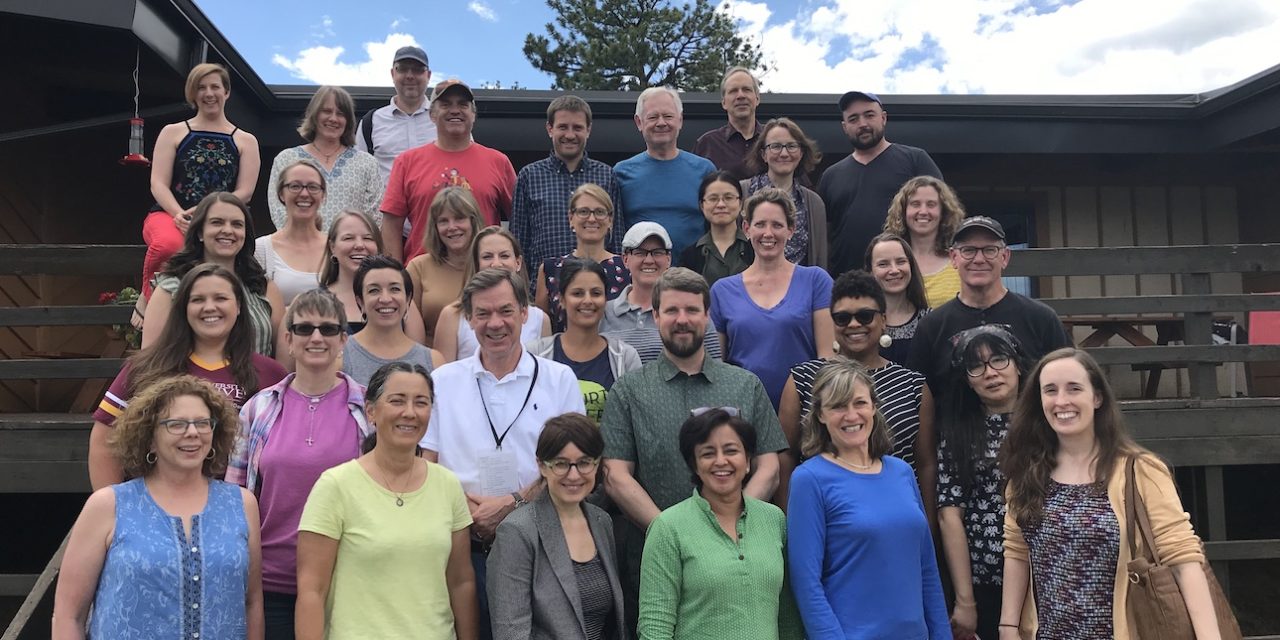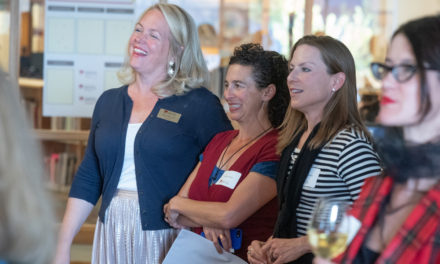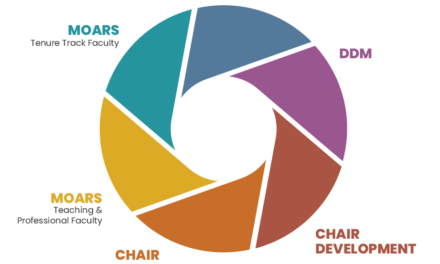On July 22-24, 2019, there were 36 faculty who gathered to co-create grassroots solutions to issues around creating collaborative departmental cultures and chairs symposium. The purpose of the symposium is to build understanding and expertise where we can create dialogue and catalyze action around developing collaborative departmental cultures and climates in your units. For many of you, the department level most impacts your experience of the university and your day to day lives. Faculty working together to learn from each other and find ways to improve departmental cultures, climates, and deliberative processes should have meaningful impact across campus. The topic selection was informed by the experiences of Faculty Senate presidents, who consistently heard from faculty about challenges in their department that needed addressing.
Selection Criteria
Deans nominated faculty based upon the following criteria:
Primary Criteria:
- Has served, is serving, or would be a candidate to serve in a chair role (or the equivalent) moving forward
- Will contribute to an action-oriented collective and potentially carry forward change initiatives over the next year
- Someone who falls along the spectrum of cheerleader for change to an out of the box thinker to a critic who is willing to change their mind and capable of surfacing new or potentially disruptive ideas for consideration by others
Secondary Criteria:
- Someone you would like to be part of these discussions to cultivate future campus leaders
Theme 1: Departmental Climate
This theme addresses the “organizational climate” that defines what it feels like day-to-day to work in an academic department or unit.An organizational climate involves our perceptions of and feelings about the places we work, including our relationships with colleagues, the procedures and practices that establish the rhythms of our work routines, the physical settings that contour our movement, and the emotional tones of our interactions.We can define the climate asstakeholders’ perceptions of the impact that the communicative acts (speaking, writing, nonverbal) constituting their work environment have on their well-being and the success of their work. Itrefers to the persistent patterns of interaction, and the quality of the relationships people form in and through those interactions.The term is also affective: the climate connotes how it feels to inhabit a given environment and how it feels to interact with, and be in relation to, the others who see themselves as belonging to that organization.
Theme 2: Inclusive Climate
Inclusive climate focuses on the belonginess aspect of inclusive excellence and what it means to create and sustain a warm, inviting departmental environment in which all faculty feel they belong and don’t need to distance themselves from their own communities of belonging that matter in their lives in order to belong to their department and the university. Unlike departmental climate writ large, inclusive climate is concerned with the intersection of cultural difference and belonging.We know feelings of belongingness (academic, social, professional) condition an individual’s commitment of time and energy to their department and directly affect productivity and internal feelings of competence and worth. Inclusive departmental climates require an ongoing and genuine recognition of critical aspects of intersecting social identities and how diversity impacts a faculty member’s sense of belonging, and thus their overall success. The department as a whole becomes stronger by creating and sustaining an inclusive departmental climate and supporting faculty retention.
Theme 3: Conflict Management
Conflict is an ever-present feature of departmental life. And, while sometimes painful, conflict is an essential ingredient of collaboration. The quest for harmony can stifle effective teamwork. Department chairs will foster vibrant collaborative cultures only when they realize conflict is natural and necessary. Two types of conflict are common in academic departments:The first are conflicts that arise in the face of making important decisions, including struggles to determine how to allocate departmental resources, how to assign responsibilities to faculty colleagues, or who to invite to join a departmental community.The second type of conflict—interpersonal feuds fueled by bitterness, rivalry, or resentment—poses a much more difficult challenge. Readied with the right perspectives, strategies, and tools, the chair may be able to foster a departmental culture in which competing positions are surfaced and discussed in ways that create critical insight into difficult problems and further collaborative responses to them.
Theme 4: Deliberative Decision Making
The deliberative process organizes the work of a department from start to finish. It is the process that determines who gets invited to the table. It is the process that:
- guides the group in its initial work of setting goals,
- establishes how proposals are generated and discussed and how decisions about them are made,
- identifies how responsibilities are assigned and resources are allocated,
- establishes how conflicts over these allocations are handled,•guides the strategic planning needed to move from decision to implementation,
- the department examines and, if necessary, revises its mission and practices,
- that is, it is the process that guides the work of making revisions to the process itself.
All of the work of a department can be undermined by an unfair process. If the process is perceived to be unfair, the group’s energy will turn inwards, as faculty question each other’s motives, struggle for control, and withdraw their commitment to shared goals. By contrast, open and credible processes harness and direct the group’s affective energy outward, activating collective intelligence and spurring creativity.
Theme 5: Chair Development
Often the scope, role, and responsibilities of the chair, and what is or should be legitimately outside of the purview of the chair, are not entirely clear. Some see the chair as a manager, as the first line of administrative leadership, and/or as a collaborative leader. Even within the same department, faculty may have different ideas of what power a chair can and should assume.There are three general principles of effective leadership:Transparency: Making all kinds of information available and easy to find; Uniformity: Leveling the field and dealing equitably with all faculty; Assistance: Attending to the needs of faculty; offering mentoring and other types of help.The presence of an open, transparent, and credible process and a chair who sees it as their primary responsibility to safeguard the integrity of the process is a necessary condition of a collaborative departmental climate—one which both requires and generates faculty commitment and belonging.



